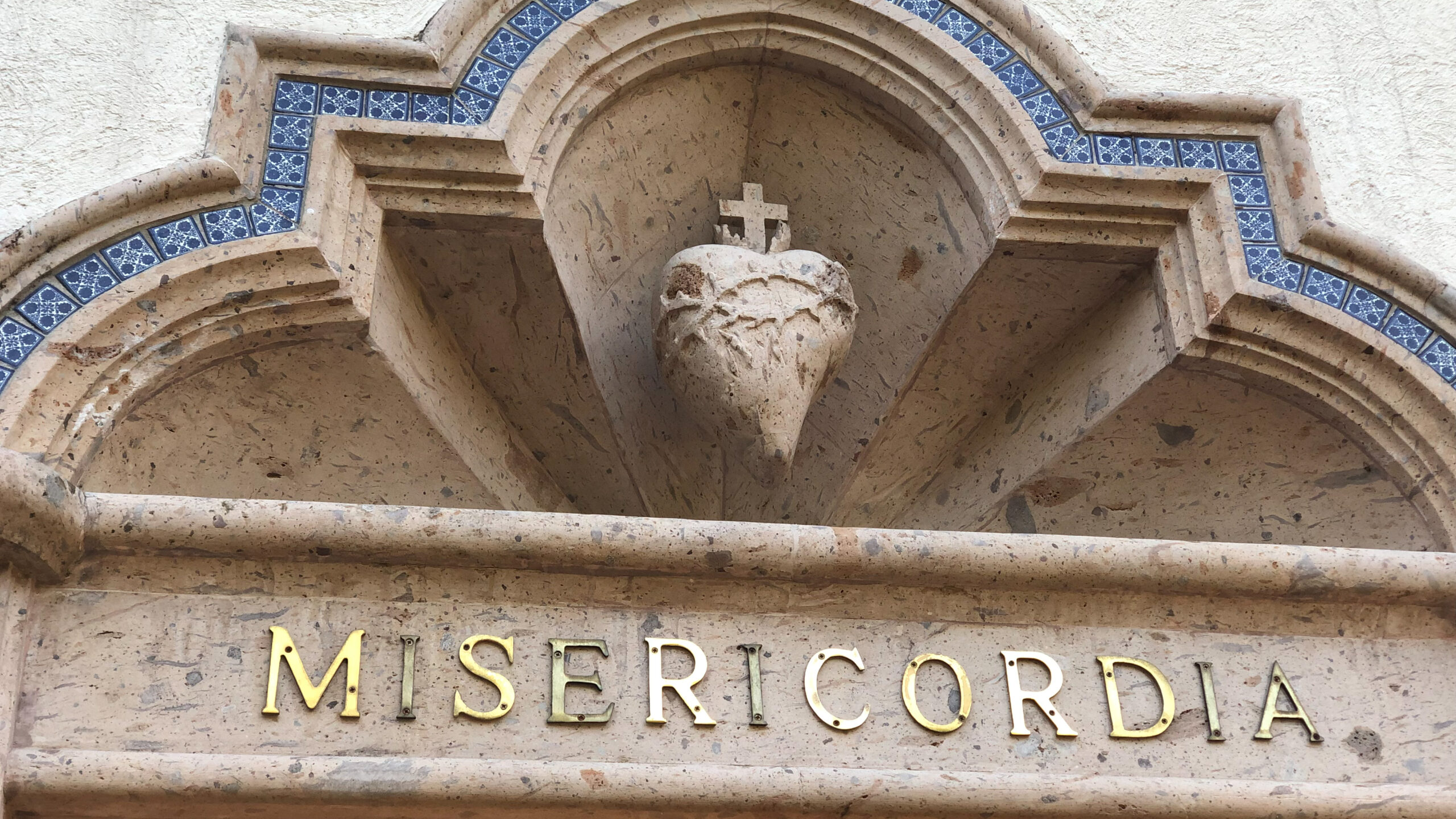We don’t talk enough about intimacy, both inside and outside the Church. There are many reasons for this, including our fear of intimacy and a crucial misunderstanding of how intimacy can be achieved. On the one hand, we long for intimacy, but we fear the possibility of another person rejecting us when we share our vulnerability. Or we fear that being too intimate with someone might result in losing our independence. Then there is the misunderstanding that the only way to achieve the intimacy we crave is by sexual encounters. According to this way of thinking, single people and celibates are doomed to lives of loneliness. But intimacy cannot be reduced to sexual union only. It is something much greater and has an essentially spiritual dimension. Our need for intimacy is an energy and pulsating desire that flows within us—that outward momentum that seeks unity of soul and the connection with another that delights the heart. On the Feast of the Sacred Heart of Jesus, what God offers us through his heart is this gift of intimacy with him.
The theme of intimacy is central to the Bible. It is expressed by the symbol of the heart and the nuptial imagery of God marrying his people. First, the symbol of the heart is considered to be the seat of emotions and human affectivity. It can rejoice (John 16:22) or be burdened with sadness or worry (John 14:1). It can feel bitterness (Ps. 73:21) or be gladdened by wine (Ps. 104:15). The heart can be opened wide with love (2 Cor. 6:11), or it can be given over to hatred (Lev. 19:17).
Yet, according to the Scriptures, the heart is not only the home of our emotions but a symbol of the total self. Solomon’s request for a “listening heart” to know the difference between good and evil shows how the discernment of right and wrong is not just an operation of the mind and will but of the heart (1 Kings 3:9). The prophet Jeremiah was acutely aware of the human heart’s deviousness (Jer. 17:9), and Ezekiel spoke of Israel’s conversion as a replacement of their hearts of stone with hearts of flesh (Ezek. 36:26). Again, the symbol of the heart is used here to signify the transformation of the total self and the total gift of self that love demands. Israel was called out by God into the desert to “speak to her heart” (Hos. 1:16) in preparation for the divine lover asking: “My child, give me your heart” (Prov. 23:26).
We rejoice in the gift of God’s unconditional love offered through that beautiful and wounded heart.
In the Gospels, Jesus inherited this understanding of the heart as symbolic of the whole self. He described himself as being “gentle and humble of heart” (Matt. 11:29). The parables of the Good Samaritan and Prodigal Son reveal a God whose heart is profoundly engaged with suffering humanity and whose mercy touches the hearts of those who receive that love. When his heart was pierced on the cross, there came out blood and water (John 19:34). The Fathers of the Church interpreted this as God’s own life being offered to his people from his open heart through the sacraments of Baptism and the Eucharist. At these moments, God’s whole life is being offered to us by God’s whole self. Then, the risen Lord shows us his wounds (Luke 24:39ff.; John 20:27ff.). A key component of intimacy with another is sharing our vulnerability. This is precisely what the risen Christ does when he invites his disciples to see his wounds and even to touch them. Behold our wounded God who presents himself as vulnerable before us.
Throughout the Scriptures, the intimacy desired by God with his people is most deeply expressed by the nuptial imagery where their intimate union would lead to fruitfulness. We see it in the prophets, such as Hosea, and the wonderful Song of Songs, where God is portrayed as a passionate lover in search of the beloved. This intimate and fruitful union of God with his people is central to the Gospel account of the wedding at Cana (John 2).

For the saints, the life of faith was a love affair of the heart that included purification and illumination but concluded with the heart of God intimately united with theirs. For St. John Chrysostom in Commentary on Second Corinthians, it is the fire of God’s love that warms the human heart: “For those who are loved enter fearlessly into the heart of their lover.” Commenting on the intimacy between the beloved disciple who leaned on the breast of Christ at the Last Supper, St. Gregory of Nyssa wrote in his Homilies on the Song of Songs, “The Lord’s breast is the sponge of the heart.”
In his Commentary on Paul’s letter to the Philippians, St. Thomas Aquinas beautifully prays for all in this way: “I long for you to be in the very heart of Christ Jesus, that is, in order that you may love him intimately and that you may be loved by him; for human life consists in this.”
In The Living Flame of Love, St. John of the Cross teaches that “if anyone is seeking God, the Beloved is seeking that person much more,” while for St. Bernard of Clairvaux in his Commentary on the Song of Songs, the union of the soul with its divine lover results in an intimacy that communicates strength: “How great is the intimacy which results from this encounter of the soul and the Word and how great the confidence which follows this intimacy!”
For St. John Henry Newman, the motto he chose when nominated cardinal was Cor ad cor loquitur (“Heart speaks to heart”). For one of the greatest intellectuals of his time, Newman knew that faith can only be born when God touches the heart—mere arguments aren’t enough. Faith needs a wavelength in the heart.
What all this evidence from Scripture and tradition reveals is God’s desire to be intimately close to his people through the human heart, which refers not just to the emotions but the whole person. Therefore, the Sacred Heart of Jesus is a symbol of that total love of God offered to us that completely satisfies our deepest desire for intimate union. All the hallmarks of intimacy are seen in the love of Christ offered through his wounded heart—acceptance, safety, sharing, vulnerability, trust, closeness, and compassion. The intimacy for which we were made is possible with God through the heart of Christ and with the Spirit “poured into our hearts” (Rom. 5:5).

Perhaps the greatest mistake we humans make is to seek intimacy with others before receiving it from God. And when we do this, the result is always the same—disappointment and sadness because we end up putting divine expectations on human shoulders. The experience of genuine intimacy between human beings is not separate from our call to intimacy with God but rather a participation in it. No person can complete us or make up for what we lack. Wholeness is not something we get from another human being. Only God can complete us.
There are no substitutes for God’s intimacy. As Aquinas would warn, those who cut themselves off from intimacy with God will inevitably turn to vice. Or as G.K. Chesterton indicates, the one who enters a brothel is really seeking intimacy with God but ends up lonelier than before. This goes a long way to explain many of the destructive things that are part of our culture today. People are desperately seeking what they cannot find.
On this Feast of the Sacred Heart, God is offering humanity another way—a life of intimacy together with him, a kinship of hearts, and an ever-deepening union of love. Contemplating the love flowing from the Sacred Heart of Jesus gives him the freedom to act on our hearts in such a way as to unite us wholly to himself. Today, we rejoice in the gift of God’s unconditional love offered through that beautiful and wounded heart.
